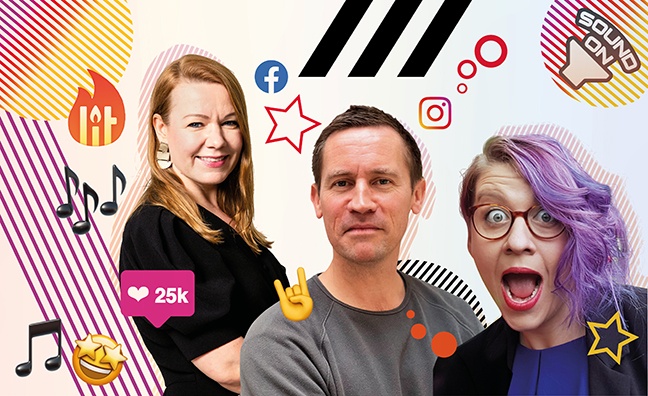In this third and final article from Meta, Jane Kinnard, Nick Callaghan and Vanessa Bakewell share their thoughts on the future of music marketing, and consider how incorporating emerging platforms like AR and VR as part of music campaigns can help build immersive experiences...
Having worked side-by-side with labels, management, and artists finding ways to existing and potential fans, creative strategist for Meta’s Creative Shop Kinnaird says, “We’ve seen really exciting leaps in the way our newer, more immersive products are able to help solve the real business problems the industry has, such as direct to consumer impact, emulating radio plays.”
Bakewell, client partner for music at Meta, adds, “The main discovery across all campaigns where we see innovation taking centre stage, is when we create engaging experiences that make users feel close to artists, and we see measurable business impact.”
“The music industry has always been ahead of the curve when it comes to adopting our emerging products into their campaigns,” says Callaghan, head of industry for entertainment at Meta.
This can be seen in the likes of Mark Ronson, Kylie, Haim and Liam Payne all integrating augmented reality (AR) into their campaigns across everything from music video production to physical product engagement.
AR and VR will continue to play a defining role in Meta’s products going forward. Already, if you’ve got a smartphone, then you’ve got access to AR. And with 3.6 billion “monthly active people” (source: Meta Q3 2021 earnings), that’s a huge audience that are already primed and familiarised with the technology.
Kylie Minogue’s Disco Spirit AR effect bridged the gap left by music tour cancellations and the promotion opportunities around it. AR connected fans with not only Kylie, but each other, at a global level. The Instagram camera became a virtual stage where for one hour only Kylie performed exclusively via motion capture.
“Launching a global campaign for such an iconic artist in a pandemic brought with it some challenges but a number of opportunities too,” says Sam Hill, senior director of digital, BMG. “With Kylie and her management team (A&P), we worked on how to bring Disco to life in the digital arena. Augmented reality is a perfect mainstream avenue to fans, and the creative really captured the mood of the album and transported that into the fan’s environment.”
This inclusion of community doesn’t just have to be as a performance. With the Liam Payne Stack It Up sampling campaign, UMG worked with production partner Aug-It! to create a gamified AR experience. This created repeat plays to non-fans and fans alike, enabling Capitol to mimic the role of radio across Meta platforms, and with the main “hook” of the track used as the game soundtrack, the better the users played, the more they heard the new track.
Aug-It!, based in Liverpool, has created over 50 Music AR effects for some of the biggest global artists.
Ant Hagan, CEO of Aug-It!, says, “The biggest win when creating effects for artists is to have them involved in the promotion and feature them front and centre in both paid and organic campaigns. It seems obvious but is sometimes missed.”
Meta is currently working with the team at EMI, Eleven Management and Bastille. AR is central to the catalogue campaign ahead of the new album release in early 2022. AR developer, Yarin Lidor, has created an album sampler for Bastille’s catalogue to re-engage with fans and tease the next phase of the campaign.
Kate Wyn Jones, business development director at EMI says, “We worked with the Meta team to create an insight led, innovative approach that enabled us to access emerging tech in AR. This supercharged the Bastille catalogue campaign to surprise and delight fans with an immersive and engaging activation using the new target capabilities in AR.”
When we start to think about the newer products available on our platforms, virtual reality being the closest, it’s easy to get caught up in what people think they mean. What we’re excited about is the potential.
This isn’t about replacing physical experiences. After all, what is better than experiencing music in real life? Instead, we want to explore how these products can solve challenges that exist and the ones we would never imagine. How can we use them to improve online experiences for those times when physical experiences aren’t possible?
With VR adoption increasing and the types of experiences expanding to help fans take part in music communities in a more connected way, it’s a space we’re excited to explore with our partners across the industry.








